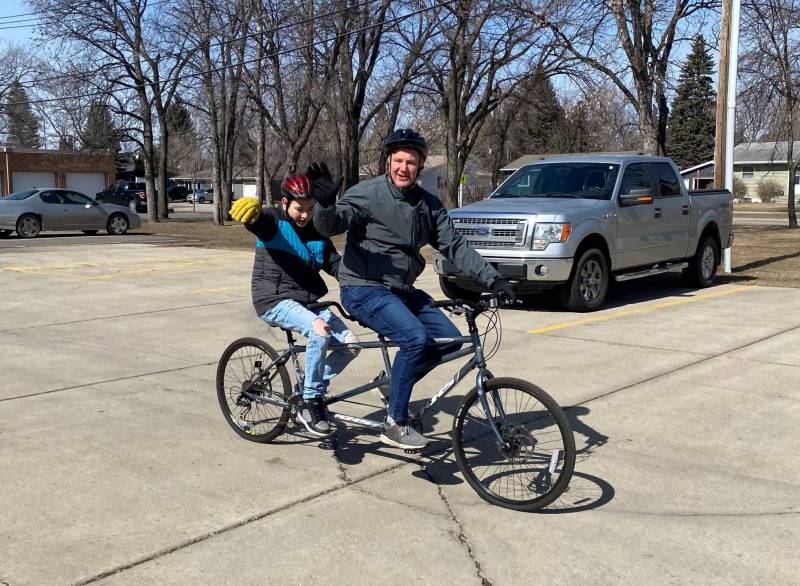by Ken Dockter
NDVS/SB Adult Program Coordinator
If you are blind or have low vision, you may feel intimidated by exercise or self-conscious about performing the activities correctly. But with a few simple adaptations, you can start moving and take advantage of all the benefits of exercise, leading to a more fulfilled life.
What are the benefits when we exercise? We can have improved mood. When exercising, our bodies release endorphins which make us feel good. Exercise can help reduce anxiety, stress, and symptoms of depression. Regular exercise will help with sleep; we can fall asleep faster and have deeper sleep when we’ve made exercise a part of our day. Our confidence and independence can increase, leading to a greater sense of self-efficacy. This can be especially empowering to those with disabilities. Continued exercise over time can improve memory, focus, and cognitive function. All of these emotional health benefits are great reasons to start moving.
There are also many physical benefits of exercising. A person will gain:
- Stronger muscles and bones
- Better balance and coordination
- Cardiovascular health
- Weight management
- Improved movement and flexibility
- Reduced risk of chronic illness
- Boosted immune function
- Longer life
When we exercise with others we can reduce feelings of isolation. The social interaction we have when working out with others in group activities or with a partner can help with support and will motivate us to show up and be consistent in our new exercise routine.
People who are blind or have low vision can participate in a wide variety of exercises, both independently and with others. The key is adapting the environment or method of instruction to suit their needs. Here’s a breakdown of suitable exercise types. These can be done at home or in a safe, familiar environment:
- Walking or Treadmill Walking - If walking outside a person should make sure that they know the route and use their cane if they need one. A treadmill can be adapted with tactual buttons which will help a person set it up independently.
- Bike or stationary bicycle – The bike is safe, low-impact, and either a standard or adaptive stationary bike can be used.
- Strength training - A person can do strength training with resistance bands or light weights.
- Yoga and Stretching – These activities help promote movement and flexibility.
- Bodyweight Exercises – This is a great way to exercise, and we do not need any extra equipment. Squats, push-ups, lunges, sit-ups, etc. require little or no equipment and are easy to learn with guidance.
There are also many options for exercises to do with others. These involve guidance, social interaction, or a partner to perform the activity:
- Tandem Biking – A tandem bike seats two people. If you’re not sure if tandem biking is for you, come to NDVS/SB, and we will try it with you as we have a tandem bike.
- Guided Running or Walking - A person can use a tether or verbal cues with a guide runner/walker.
- Group Fitness Classes - Talk with the teacher beforehand about what adaptations you need. A good description of the moves or maybe a slow walk through the moves before the class starts may be all you need to fully enjoy this type of exercise.
These are just a few examples of exercise that you can do. The key is that a person just starts to move to increase health. Remember to speak with your doctor before you start an exercise program. Now, start moving!
